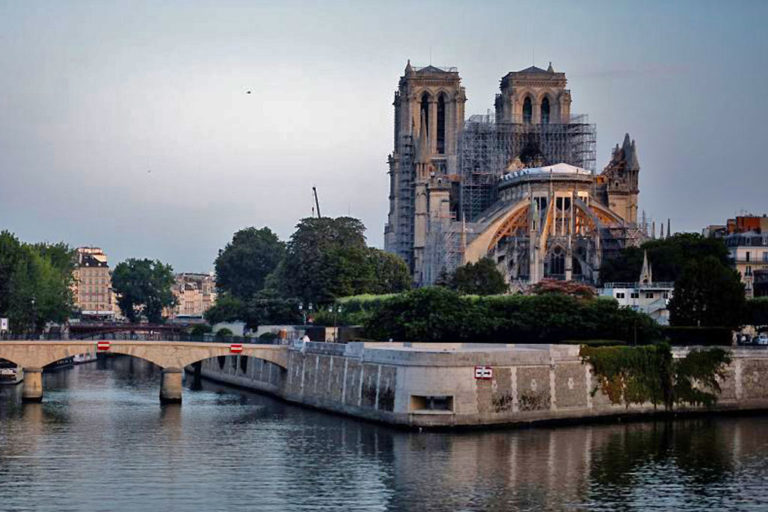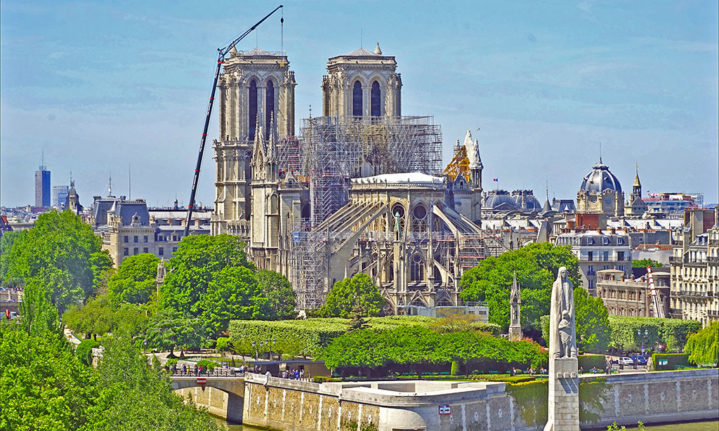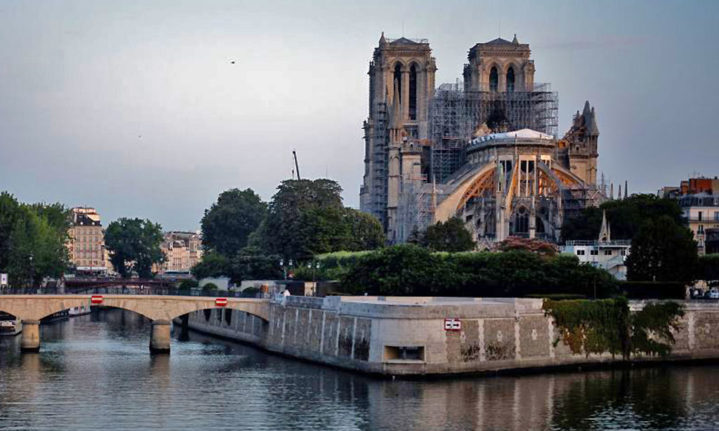While South Africa experiences cold fronts bringing snow, Europe is in the grips of the second heatwave of the season.
According to the French national meteorological service Météo France, Paris reached a record high of 41°C, with 42°C predicted for today. The closest to this maximum temperature Paris has recorded was measured more than 70 years ago in 1947, when the temperature reached 40.4°C.

The river Seine banks and the Notre-Dame de Paris Cathedral on 25 July, 2019 in Paris as a heatwave hits the French capital. After all-time temperature records were smashed in Belgium, Germany and the Netherlands on 24 July, Britain and the French capital Paris could see the highest-ever temperatures on 25 July. Image credit: Lionel Bonaventure/ AFP/Getty Images
Earier this year the iconic Parisian landmark Notre Dame suffered immense damage in a fire, and now the chief architect responsible for its restoration is concerned that the heatwave could threaten the damaged structure.
Also read: Notre Dame Cathedral: After the flames
Reuters reported on Wednesday that Chief Architect Philippe Villeneuve said, ‘I am very worried about the heatwave because, as you know, the Cathedral suffered from the fire, the beams coming down, but also the shock from the water from the firefighters. The masonry is saturated with water. What I fear is that the joints or the masonry, as they dry, lose their coherence, their cohesion and their structural qualities and that all of sudden, the vault gives way.’
The vaults, which have not been accessible since the fire, could be at risk. ‘As I speak here, the vaults could very well collapse, because since 15 April, we haven’t been able to access the vaults, neither from above nor from underneath,’ said Villeneuve.
In the UK, there’s concern that train tracks could warp and buckle in Thursday’s heat. According to CNN, Network Rail has warned that ‘the temperature of the steel tracks is set to exceed 50 Celsius in and around London.’ As a precaution trains have been made to run at a slower speed.
Image: Lionel Bonaventure

















